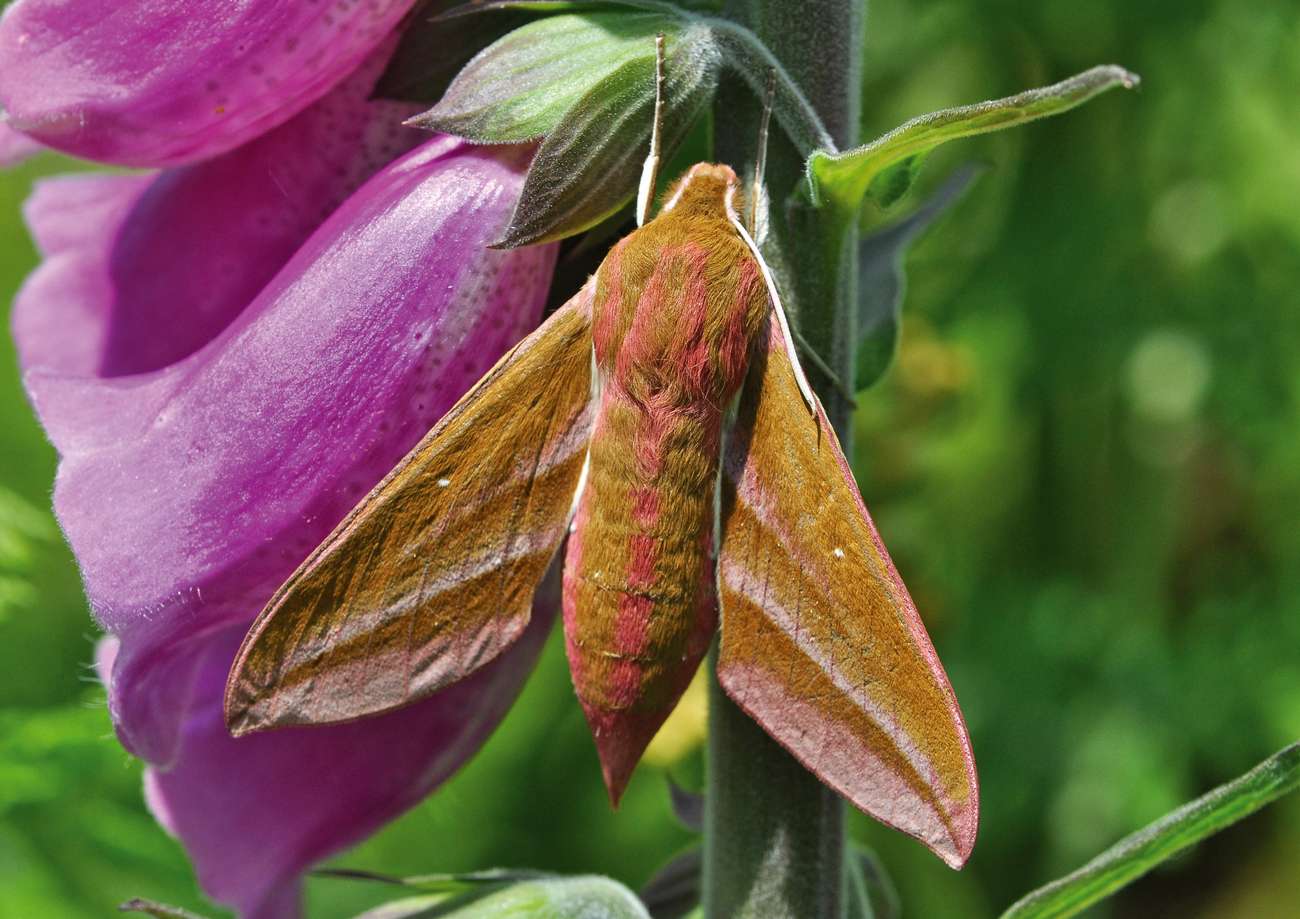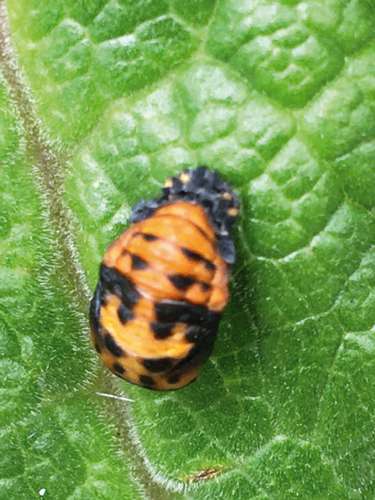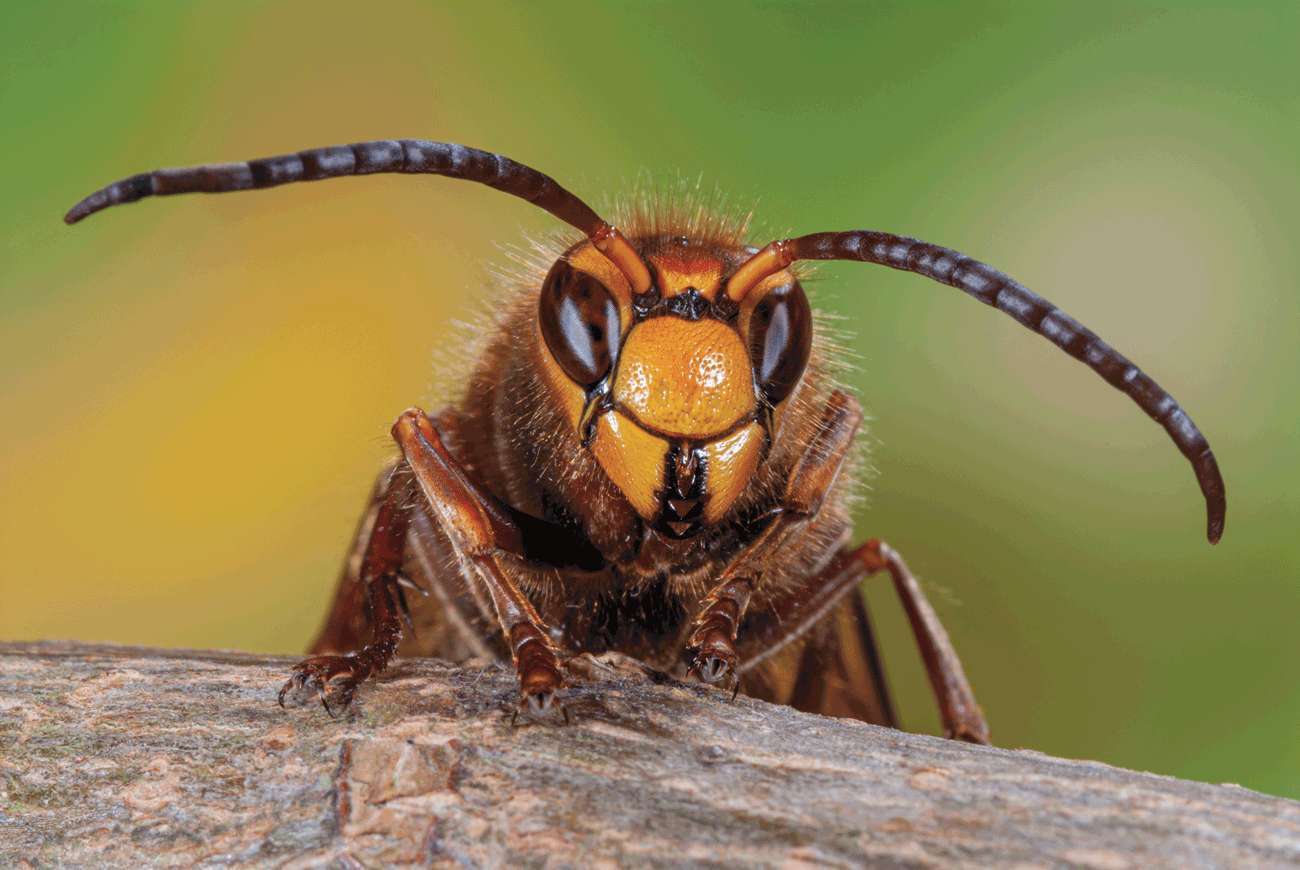
Elephant Hawkmoth
It was a very warm day when I met up with a few of the Beryl Harvey Conservation volunteers. Right away we were aware of the most appalling stench. It wasn’t long before the source of the stink was discovered; a dead badger. Very dead and seething with maggots. This scene was an example of Nature’s very efficient disposal system; and it needs to be – otherwise we would be surrounded by smelly corpses. I had assumed that a species of fly had laid eggs in the dead badger, the eggs then hatched into maggots. Birds feed on the maggots and what could be neater? It was only when an observant friend asked me if I knew that bluebottles have live maggots in them – and miss out the egg laying stage altogether so that they are ‘ready to go’. I thought I would do some research.
My first instinct on seeing a fly is to reach for the swatter – so when a friend lent me Erica McAlister’s book The Secret Life of Flies – I approached reading it with some trepidation. I was very soon too fascinated to feel disgust. The chapter on the fly species Necrophagus deals specifically with this essential link in Nature’s cycle of life and death. Until 1862 when Pasteur carried out some experiments, it was generally thought that maggots arose by ‘spontaneous generation’. He put meat in two flasks – one sealed and one not. The meat in the unsealed flask developed maggots, as flies had access – but no maggots in the sealed flask.
Stage 1 of Ladybird larva – photo by Doreen Hancock
Blow flies can detect dead meat at 10 miles away and can arrive at the site of the feast in 10 minutes. There is huge competition amongst these feeders, which is why their senses are alert and they can travel at speed. And also why Bluebottles are viviparous i.e. give birth to live progeny to stay ahead of the game.
There are other fascinating facts about this species of flies. How they help forensic entomologists solve crimes by studying the age of the maggots on corpses – or how the maggots of greenbottles were used during the American Civil War to clean putrid wounds – and in cases where the patient is antibiotic resistant, they are still used. These flies secrete allantoin, a natural antiseptic which is very efficacious in treating diabetic leg ulcers. To quote from McAlisters book: Whether it is disposing of bodies or mending them, this family of flies is essential in our environment. These flies favour environments which most of us would consider highly unfavourable, and convert the defunct to the functional, which makes for a more pleasant world for us all. Rather neatly put. The dead badger on Beryl Harvey, after a week, was just a few bones and a wisp of pelt – and the air smelt a lot better, too.
Stage 2 of Ladybird larva – photo by Doreen Hancock
In my July article I wrote about honey fungus – and mentioned Armillaria solipides, which includes the so-called Humongous Fungus in Oregon. This specimen is believed to be the largest living organism on the planet. The picture which accompanied my piece showed the mushrooms of this species – which are edible, and apparently delicious fried in butter! There are many members of the Armillaria family, all of which have very different mushrooms appearing in autumn as a signal of another attack on a tree or shrub. Not only is the honey fungus a rampant killer – it is obviously the master of disguise.
In the last month the lovely elephant hawkmoth was spotted in a garden in Mount Road – so called because the caterpillar’s body ends with a ‘curved ‘horn’ which someone thought looked like an elephant’s trunk. It is a beautiful moth, mainly nocturnal and likes feeding on Rosebay Willow herb, garden fuschias and lavender. There have also been two sightings of the ladybird larvae locally; they look like short caterpillars, but with longer legs – on which they can scuttle about at great speed. Like ladybirds, they also feed on aphids – a gardener’s true friend.
Beryl Harvey Fields is Cranleigh’s nature conservation site. We need volunteers. For further information: visit our conservation site in Cranleigh – or better, volunteer. Contact Philip Townsend at: for details.
Find out more about the Beryl Harvey Fields HERE.













